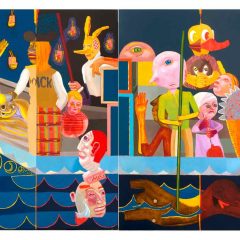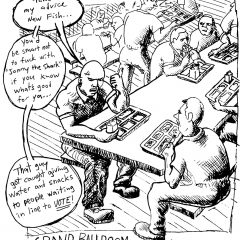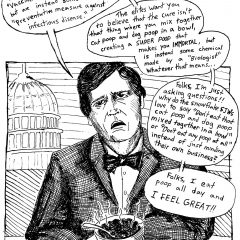On a recent trip to Ljubljana I discovered one of the most radical exhibitions I have seen at a mainstream museum. “The Heritage of 1989. Case Study: The Second Yugoslav Documents” at The Modern Gallery, Museum of Modern Art (MG+MSUM) from April 26 – Sept. 17, 2017, was a retrospective examination of the last, large exhibition of contemporary art in Yugoslavia prior to its dissolution into separate states. “The Heritage of 1989” was a brave and probing examination of the politics inherent to all presentation of art.
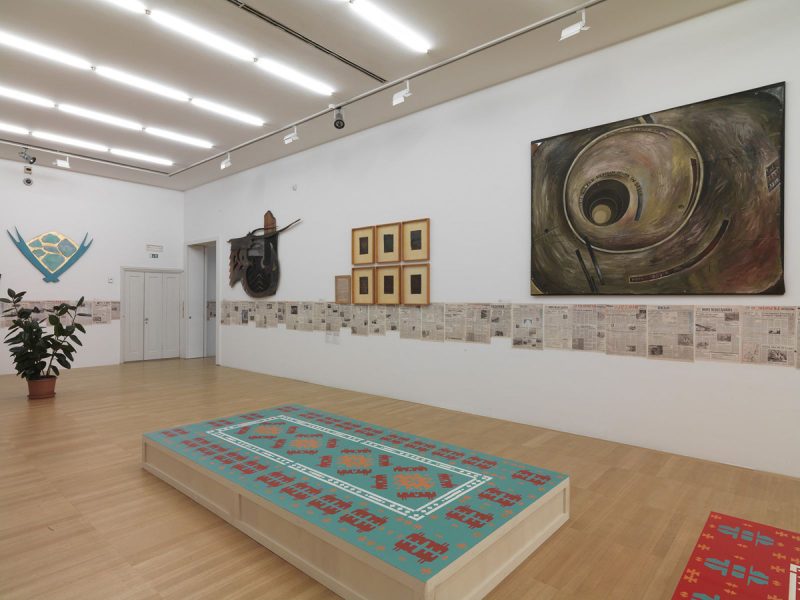
Yugoslav Documents began in 1984 as an artists’ initiative in Sarajavo, intended to help regional artists create an international platform that was not dominated by state ideology. Its name was an obvious and humorously self-deprecating nod to documenta, the international exhibition held every five years since 1955 in Kassel, West Germany where few Yugoslav artists had ever been included. The first Yugoslav Documents was held in 1987; the second and final presentation was in 1989.
“Yugoslav Documents ’89” was curated by two artists and according to MG+MSUM director and the exhibition’s curator, Zdenka Badovinac, “was notably heterogeneous and represented the post-modern trends that dominated the period, such as New Painting, New Expressionism, Neo-Geo, the New Informel, New Constructivism, the New Sculpture devoted to the deconstruction of modernism, the art of personal poetics, art with almost ethnographic ties to local traditions – all of it, for the most part, without any direct reference to current social issues.” The 2017 exhibition did not attempt to recreate the earlier one. It included some of the original artworks as well as re-constructions, installation photographs and various documentation and ephemera related to the exhibition. The museum described it as a “re-enactment,” an attempt to historicize the ’89 exhibition and allow alternative readings of the history.
“The Heritage of 1989,” which is part of a larger project, “THE EIGHTIES,” a five-year program on “The Uses of Art – the Legacy of 1848 and 1989” organized by L’Internationale, a consortium of six European museums of modern and contemporary art, examined the ’89 exhibition in terms of its contemporary social and political context and addressed the subjects on which the exhibition had turned its back. That year the Presidency of Yugoslavia declared a state of emergency in Kosovo and sent in the army. Three weeks after “Yugoslav Documents ’89” opened, Kosovo and Vojvodina were stripped of autonomous regional status. Slobodan Milosevic declared Serbian right to sovereignty and Slovenia amended its constitution to protect its autonomy. In November the Berlin Wall fell, and with it the political order established after WWII. MG+MSUM situated these events as a literal background to the art; the front pages of the main daily newspapers from the constituent republics of Yugoslavia ran chronologically around the exhibition’s walls. It was impossible to view the art apart from the explosive political situation in which it was created and exhibited. MG+MSUM also commissioned an installation by Azra Aksamija that explored cultural institutions in Sarajevo and organized a large number of public lectures, discussions and workshops about social antagonisms and shared cultural heritage among states of the former Yugoslavia. It also offered embroidery workshops for immigrants from Bosnia and Herzegovina.
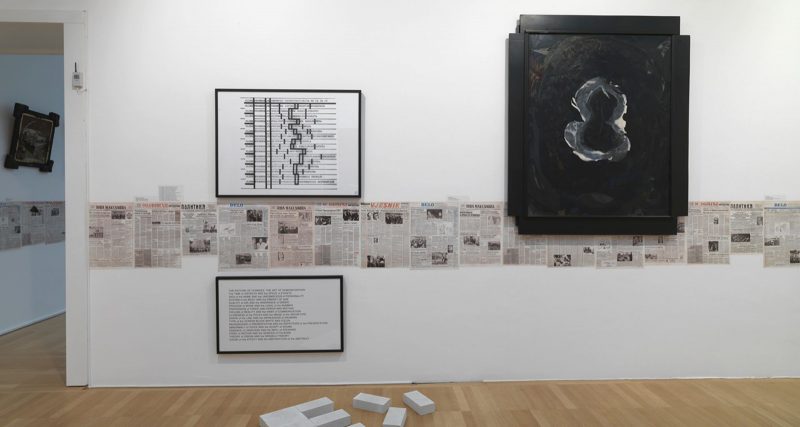
The museum did not criticize the organization of “Yugoslav Documents ’89” from the advantage of hindsight; rather it looked at how the earlier exhibition represented a symbolic expression of Yugoslav unity and sociality, and used this to raise the question of what becomes of cultural heritage after its common basis has fractured. It acknowledged that despite inter-ethnic antagonisms, the interests of Yugoslav artists in creating a commons paralleled the state’s ideology of unity. It also acknowledged nostalgia among some of the participants for the earlier sociality that extended more widely than the present scope of independent states. The exhibition was an attempt to critically analyze the past to create a footing for the future.
The implications of MG+MSUM’s stance are huge, and universal. They bring a subject common in current academic understanding of art history into the previously recalcitrant precincts of the museum: that the presentation and interpretation of all art is political – sometimes by what it consciously addresses, but also by what it excludes. This is a riposte to the stance of Thomas Messer in 1971 when he canceled Hans Haacke’s exhibition at the Guggenheim Museum, stating that direct expression of political issues did not belong in an art museum. A national museum in this small country outside the major art centers has a sophisticated understanding of museum practice, criticism and international discussions around historiography. Will others be willing to follow this lead?


